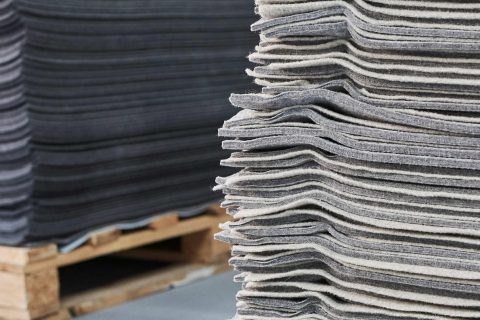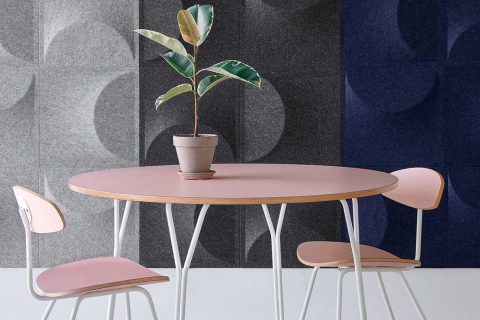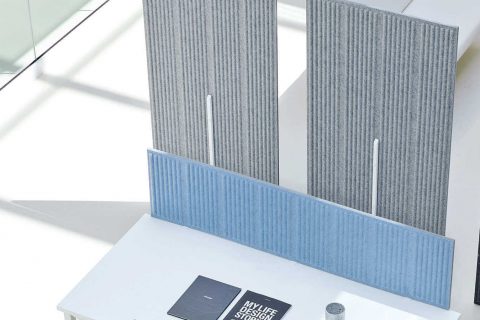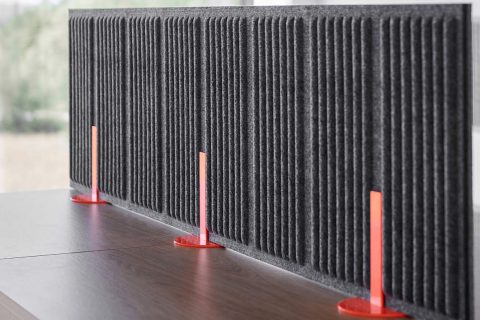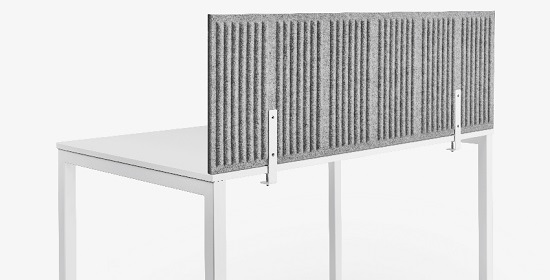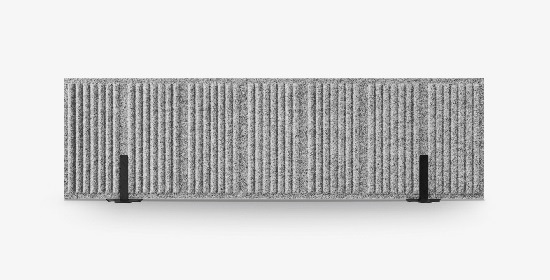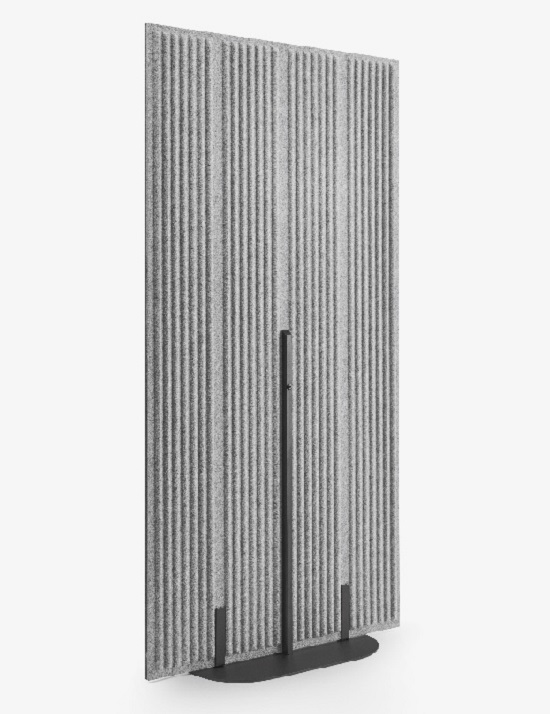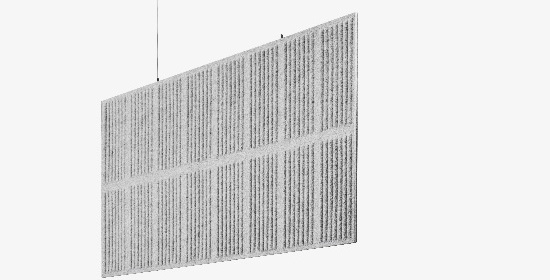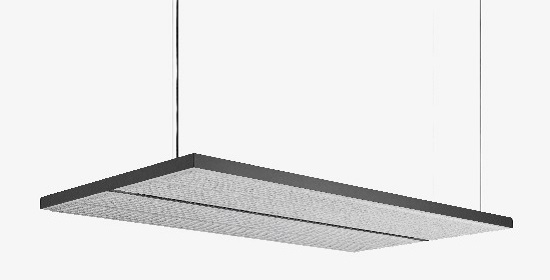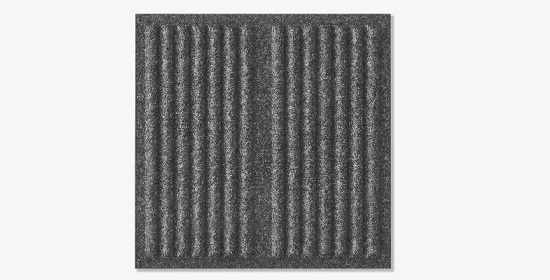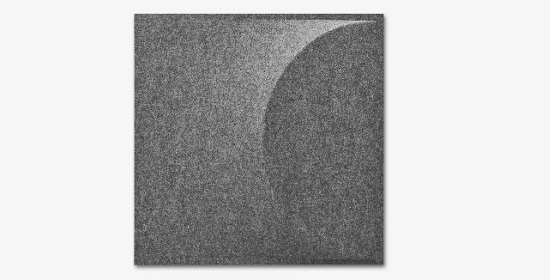How to eliminate sources of noise?
Materials either absorb or reflect sound waves. The general principle is that dense, hard surfaces reflect sound waves, while soft, porous materials absorb sound. rPET fabric is the second type as it has an optimal structure and thickness that enables it to serve as an effective sound absorber.
What we commonly call ‘noise’ can refer to a great many different processes. Without defining these, we cannot choose the right acoustic arrangement.
We have to locate the source and cause of the noise!
If noise comes from outside or from another part of the building,
it is best to block it architecturally. This can be done using soundproofed windows, wall and ceiling insulation, as well as specialist acoustic wall plaster.
If the noise source is within the premises
it is important to define what type of noise we are dealing with. The most irritating type of noise is an echo. An echo is created when sound travels through an interior and strikes various types of surface. The worst echoes are caused by sound waves striking hard surfaces such as concrete, glass or metal, which intensify the reflected sound and increase the amplitude. The first step is to maximise sound absorption using absorbent material such as carpets, curtains, wallpaper and, of course, acoustic panels – both ceiling and wall panels.
When there is one source of noise
A single noise source (e.g. a coffee machine or a printer) is best isolated from the rest of the room using architectural barriers (e.g. soundproofed doors or a separate room), or if this is not possible, by using light acoustic walls.
When there are multiple noise sources
If the noise is from many sources (e.g. discussions), the sound behaves unpredictably, depending on the type of space and its location. Sound behaves differently if people are seated compared to when they are moving around and talking. Given that the majority of sounds reflect off walls, ceilings and floors, covering these surfaces with soft acoustic materials will have a significant effect. Secondly, energy absorbing barriers can be installed between noise sources – such as walls around workstations and meeting places, as well as desk panels and vertical curtains for when noise cumulates around desks. Such barriers also help to improve concentration and ensure a certain degree of privacy – the biggest headache in open spaces.
If the office space is small
In small rooms, e.g. a conference room, particular attention must be paid to the walls and to problems related to echoes, which are often caused by sound being reflected off surfaces close to one another. It is worth investing in acoustic panels and soft carpeting for the floor.
Large open spaces
Contrary to small spaces, in large rooms the sound weakens before it reaches the walls. More frequently, it reflects off the ceiling and spreads freely throughout the room. In such interiors, various configurations of ceiling panels are the best solution, including panels with LED lighting.




